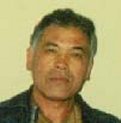17:45 - 19:30, No.2 Conference Room
Workshop F
Victims and Support Organizations
Chairs: Kazunori Uekusa and Kyla Sentes
 |
Shigeji Tsukahara
Mitsubishi-Nagasaki Pneumoconiosis Patients Association, Japan
ABSTRACT
The Mitsubishi-Nagasaki Pneumoconiosis Patients Association was organized in 1983. Since then, the association piled up various activities for 20 years.
The association is composed of current laborer, retiree and subcontractor laborer. The current membership is more than 100, while the initial membership was approximately 20.
Some members of the association filed damage suits against their employer, MITSUBISHI HEAVY INDUSTRIES, Ltd.. The first litigation was settled with reconciliation three years and five months after it was brought into the court. The second one filed in the Nagasaki district court is now pending. The patients association is the core of the plaintiffs of those litigations.
In both cases, many asbestos bodies were identified in the organs of the plaintiffs. Although some of the members are being forced to die from lung cancer accompanied with pneumoconiosis, the applications for the occupational compensation from some of the victims, initially registered as level 2 under the pneumoconiosis law were approved after the asbestos was identified by X-ray photographs and/or autopsies. Other member's applications were also acknowledged as a result of the efforts of the supporting physicians and medical institutions who found asbestos-induced lung cancer at their independent medical checkups. The fatal diseases was overlooked at the regulatory medical checkup proceeded by pro-corporation doctors.
The Association has been working in close collaboration with Mitsubishi Nagasaki Shipyard Branch of All Japan Shipbuilding and Engineering Union.
Under strong solidarity, the association and the branch have urged the employer to pay compensations for the victims, to improve the dust control measures at workplaces and claimed them to take measures against dust hazard, questioning their poor policy to prevent the pneumoconiosis. For one thing, they researched the past use of asbestos in the shipyards and conducted questionnaire surveys on the victims' awareness about their experiences of handing asbestos. Certainly, the compensation helped victims to be relieved, but their lives were lost and the beloved fathers or husbands would never come back again. Their grief would not be compensated.
Many pneumoconiosis victims and other asbestos victims are left unable to reach occupational compensations and legal actions, just waiting for being supported. I hope that the international conference will enhance our energy to act on the basis of accurate recognition about the situation we are facing now.